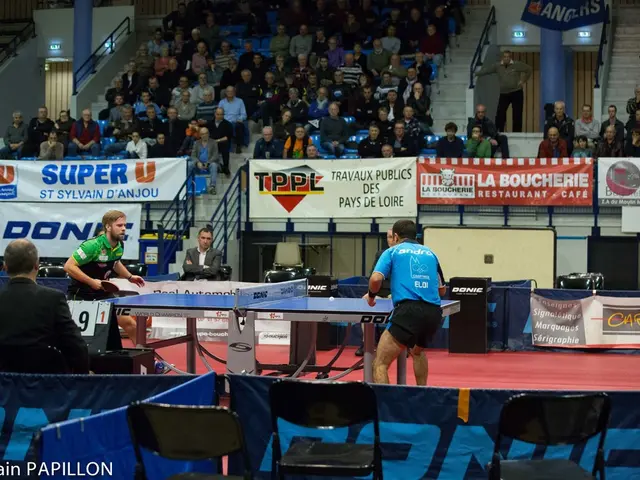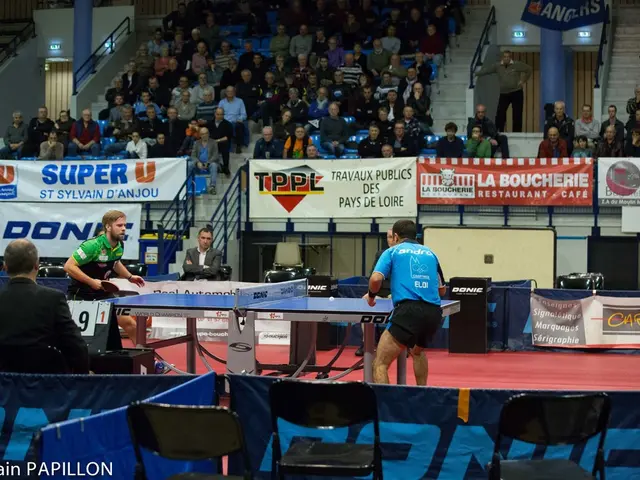Wagers labeled as 'over/under' are gambling options where a prediction is made on whether the total outcome of an event will be over or under a specific number.
The thrilling world of betting offers a myriad of choices, but not all bet types bring the same excitement. Over/Under bets offer a unique and dynamic approach, focusing on the overall gamescape instead of the winner. Instead of wagering on a specific team or player, you're betting on whether the total points, goals, or games will surpass or fall short of the bookmaker's assumption. Let's explore Over/Under bets, their workings, and how to maximize your chances of success!
What are Over/Under Bets?
Known as over/under bets, this bet type involves predicting whether a certain number of events like goals, points, runs, games, or sets, will exceed or fall under the bookmaker's set line.
Their popularity lies in the wide range of possible scenarios. A bet can still be profitable even if the underdog triumphs as long as your prediction regarding the total points or goals is correct. Moreover, you don't have to analyze lineups or individual player performances to the same extent as other bet types.
Lines can be set at whole or half values. A half value like 2.5 goals leaves no option for a draw, while a whole value like 2 or 3 can end in a "push", in which exactly that number of goals is scored.
How They Work and Examples
To understand Over/Under bets concretely, let's look at an example. Imagine you're watching a football match between Team A and Team B. The bookmaker has set the value at 2.5 goals. If you believe that at least three goals will be scored, you'd place an Over bet ("Over 2.5"). If exactly three or more goals are scored, you win. If fewer than three goals are scored, you lose. Conversely, an Under bet ("Under 2.5") works when you're rooting for a low-scoring game.
Sports like basketball, handball, tennis, and many others adopt this principle. For example, in basketball betting, it's often about high scores, with lines set at 200 or more. Handball matches often see many goals, with lines often set in the 50s or 60s. In tennis, Over/Under bets refer to the number of games or sets.
The common denominator: it's all about the final result, not the winner of the match, offering more flexibility and less dependence on team or player performances.
Over/Under Bets in Different Sports
Football
Over/Under bets are extremely popular in football, with classic lines set at 2.5 or 3.5 goals. Lower goal counts are characteristic of football matches, making each goal scored crucial for your bet. Tactical strategies, such as a dominant defense or a strong attacking team, can make Under or Over bets more appealing, respectively.
In high-stakes matches like rivalry games or cup matches, the probability of many goals increases, leading to exciting Over/Under predictions. However, be cautious not to rely solely on emotions as analyzing statistics like xG (Expected Goals), shot frequency, and defensive strength often provides more reliable results.
Besides betting on the total number of goals in a match, football offers more Over/Under betting opportunities. Bet on the goals in a half, or even on the number of yellow cards or corner kicks.
Basketball
In basketball, many more points are scored compared to football, meaning lines can be set above 200 points. Analyzing pacing and individual player skills can significantly influence the outcome. Teams that prefer a fast-paced style and more attacks per game often lead to higher point totals, while slower-paced teams with long offensive sequences produce fewer points.
Tennis
Over/Under bets take a different form in tennis due to its individual nature. Depending on the tournament type, the line may refer to the number of games or sets played. Longer matches are more likely in men's singles at Grand Slam tournaments due to best-of-five set matches.
To estimate the number of games or sets, consider each player's playing style and past performances. A strong server usually leads to longer sets, making an Over bet on games appealing. Conversely, when two strong return players face off, it's easier for a set to be decided quickly, making an Under bet an option.
Over/Under bets are bets that involve predicting whether a certain number of events, such as goals, points, or games, will exceed or fall under the bookmaker's set line, making it a unique and dynamic approach that offers profitability even in unexpected circumstances. For example, in a football match between Team A and Team B, if the bookmaker sets the value at 2.5 goals, an Over bet ("Over 2.5") is placed when believing that at least three goals will be scored, and an Under bet ("Under 2.5") is placed when rooting for a low-scoring game. This bet type offers more flexibility, as it focuses on the final result rather than the winner, and is popular across various sports, including football, basketball, handball, and tennis.








